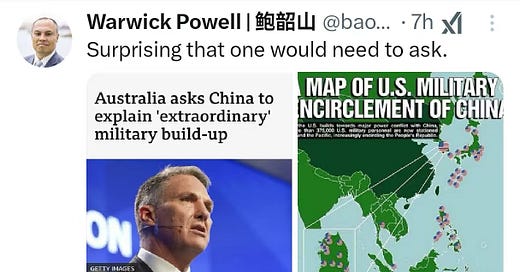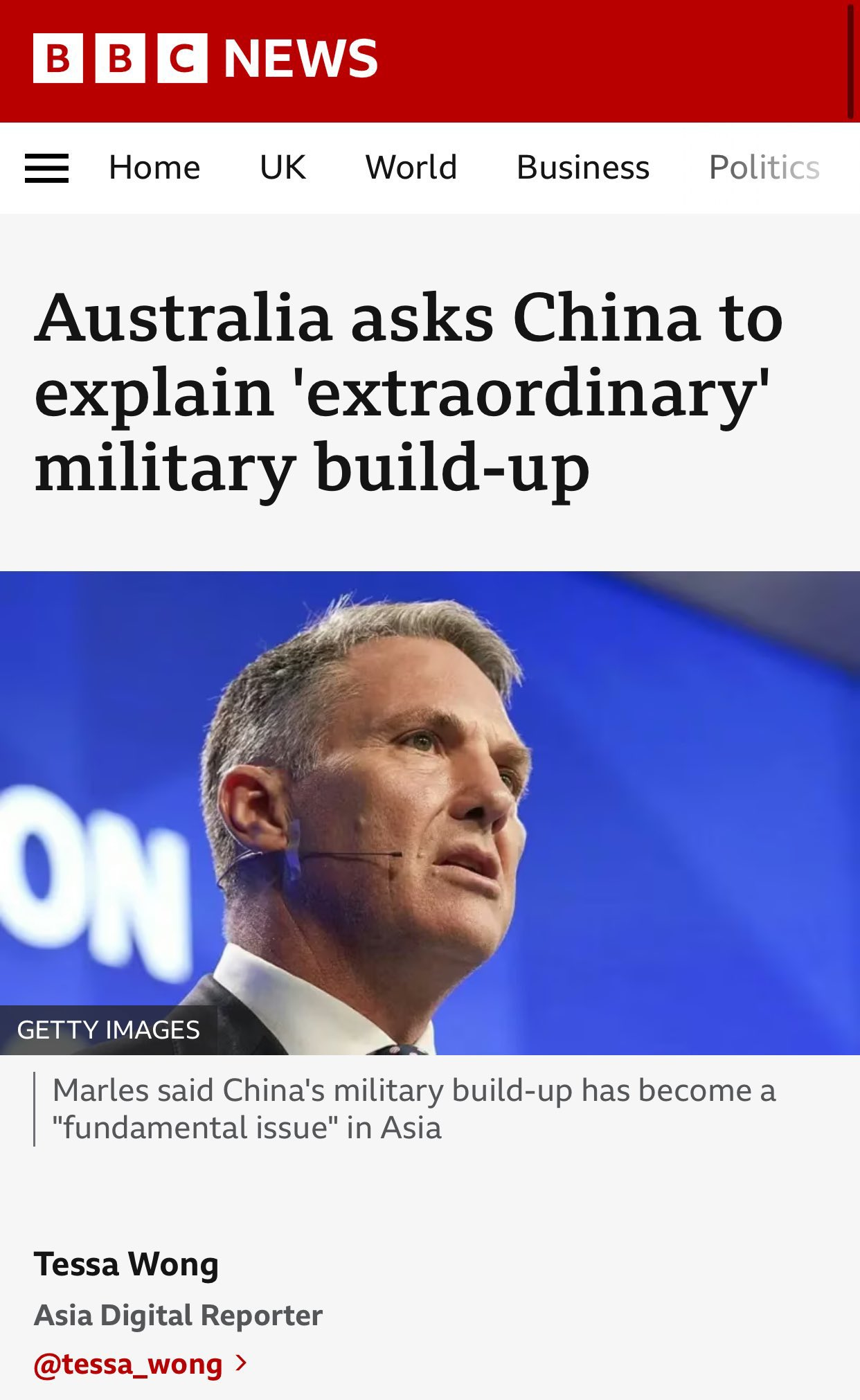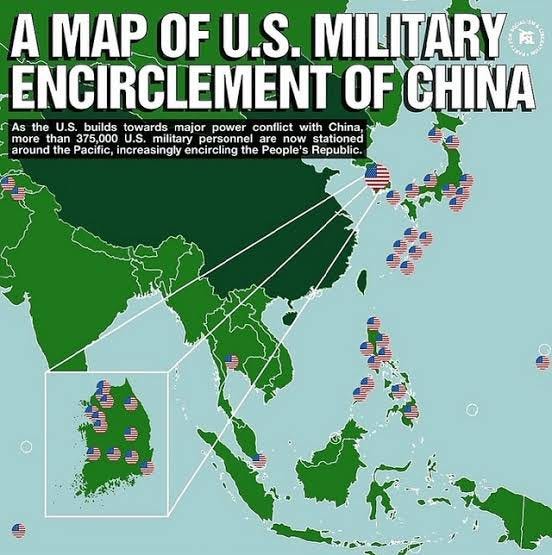Short Commentary!
The Marles question addressed against China was quite perplexing at the 2025 Shangri-La Dialogue, and not just in the rhetorical sense, but in terms of geopolitical double standards and strategic narratives. Australian Defence Minister Richard Marles’ recent demand that China “explain” its so-called “extraordinary” military build-up borders on the disingenuous, especially when viewed against the broader canvas of U.S.-led militarization in the Indo-Pacific, a theater that is increasingly being primed for major power confrontation.
First, does Marles have a strategic amnesia, or is he selective? Marles' remarks reflect a deeper trend in Western-aligned Indo-Pacific discourse: strategic amnesia. The United States has over 375,000 military personnel stationed around the Pacific. With bases in Japan, South Korea, Guam, the Philippines (via EDCA), and expanding arrangements with Australia and Papua New Guinea, the U.S. has effectively ring-fenced China in what Chinese analysts rightly term a modern "cage containment" strategy. Yet, the burden of “explaining” military build-up falls on Beijing? Wow!
Second, Marles’ criticism aligns with Australia's long-standing role as the U.S.’s “deputy sheriff” with a double standard in the Asia-Pacific. However, what’s striking is the incoherence of Australia’s stance: Australia itself is deepening its militarization via AUKUS, which includes acquiring nuclear-powered submarines and advancing long-range strike capabilities. It hosts rotational U.S. Marines in Darwin, conducts expanded military exercises like Talisman Sabre, and is integrating deeply into Five Eyes intelligence sharing and Indo-Pacific strategic posturing.
If China must justify its military modernization, why is Australia or the U.S. not held to the same standard, especially when it's preparing for high-end warfighting under a nuclear-powered security alliance?
Third, China's military buildup, as far as its military doctrine is concerned, is defensive. Let’s be clear: China’s military modernization, while rapid, is still not at par with the U.S. quantitatively, but not in qualitative capabilities. The People’s Liberation Army’s (PLA’s) focus has been on asymmetric capabilities, A2/AD systems, missile development, and anti-ship capabilities, mainly to deter U.S. intervention, especially in Taiwan contingencies. This is not surprising for a country facing a ring of U.S. military installations and aggressive surveillance operations in its near seas.
Calling this buildup "extraordinary" while ignoring the extraordinary buildup of the Quad, NATO’s expanding footprint in the Indo-Pacific region, and AUKUS reflects a projection of threat perception rather than a dispassionate analysis of security dynamics.
Fourth, the framing and the manufactured narrative of China’s rise as a military threat are not neutral; it’s a construct of strategic storytelling. Western officials like Marles amplify this narrative to justify increased defense budgets and foreign basing rights, public opinion for more aggressive postures, and mask Western alliance militarization's inherently offensive nature by branding it as "defensive deterrence." This classic securitization creates a perception of an existential threat to enable extraordinary measures.
Hence, Marles’ remarks are less a request for clarity and more a strategic maneuver in a larger information war. The real question is not why China is building up its military, but why countries like Australia expect China to remain passive while surrounded by a growing, nuclear-armed military architecture led by a superpower that explicitly labels China as its "pacing threat or a rival and competition." If Canberra wants stability in the Asia Pacific region, it should stop parroting Washington’s threat inflation and start advocating for mutual de-escalation and dialogue, not militarized hypocrisy
.






